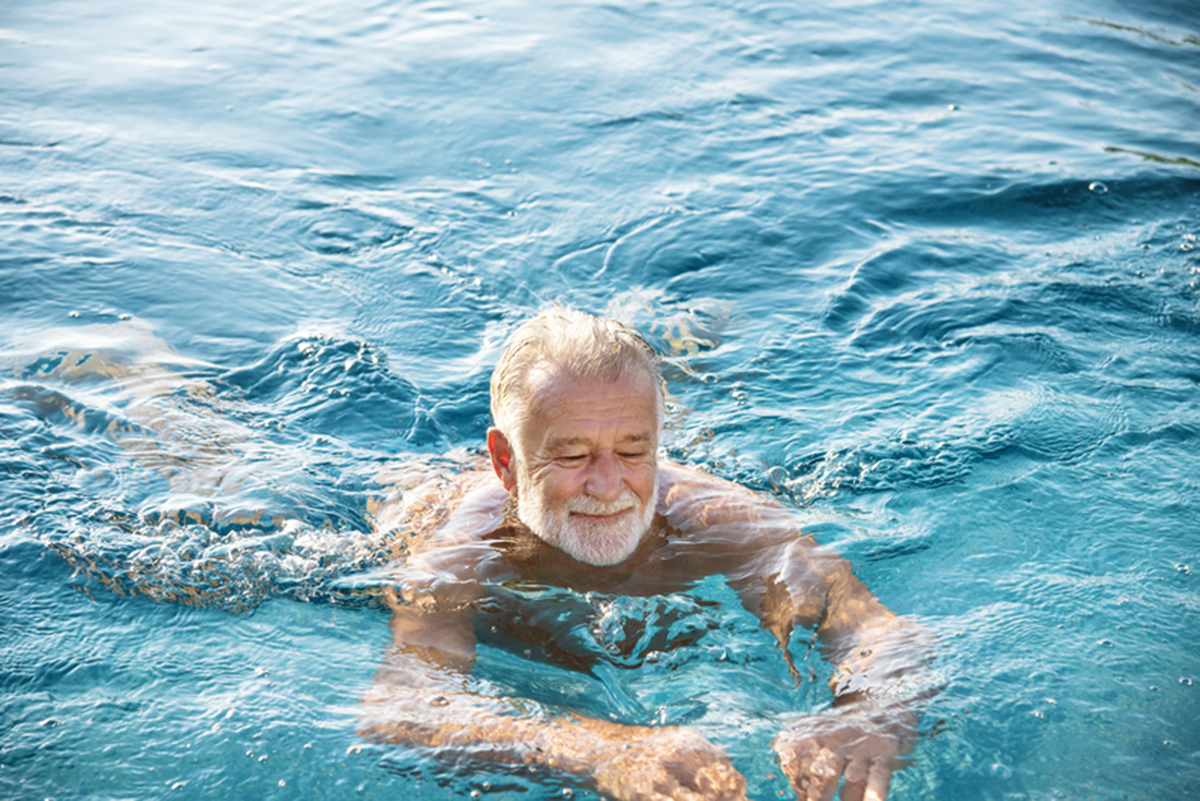Arthritis is a disease that is characterized by joint inflammation, swelling and pain. Generally, the treatment of arthritis involves medication. However, many people choose to incorporate an individualized and tailored exercise regimen into their treatment plan as it has been shown to help improve pain, fatigue, preserve structure of joints and restore joint function.

Unfortunately, many patients with arthritis choose to abstain from exercise as stiffness and swelling of joints make physical activity both painful and difficult. However, avoiding physical activity is associated with a range of issues, including:
- Weight gain
- Significant muscle loss
- Reduce range of movement for joints
When done properly, exercise as part of an arthritis treatment regimen can:
- Improve joint mobility
- Increase muscle strength
- Increase muscle flexibility
- Improve physical conditioning
- Maintain healthy weight, which reduces pressure on joints
- Improve endurance
- Keeps bone and cartilage tissue strong
1. Exercises that improve joint mobility and flexibility
Arthritis patients have an unfortunate tendency to keep their arthritic joints — particularly those in the knees, fingers and hands — bent, in an effort to escape pain. This habit, which may be subconscious, may bring temporary comfort, but it can lead to permanent loss of movement in the long run.
This is where range of motion exercises come in. Range-of-motion exercises help joints become more mobile and flexible. Essentially, these exercises involve gently and slowly straightening and bending the joints as far as they can go without causing pain. This helps condition the affected joints, preventing loss of function and even increasing already lost mobility.
Furthermore, range-of-motion exercises are important as a warm-up or stretch and should be done before any strengthening or endurance exercises or other types of physical activity. Your doctor can help guide you on how to do range-of-motion exercises.
2. Exercises that help strengthen muscles
For joints that are weak, such as those that have arthritis, having strong muscles around the joints can help protect these joints from further damage. Thus, having a regimen of strengthening exercises can be incorporated into your arthritis treatment regimen. Many different types of strengthening exercises, when done properly, can effectively maintain or increase muscle tissue to support your joints.
Specifically, a group of exercises known as isometrics can help make muscles strong without bending painful joints. In isometrics, you don’t have any joint involvement. The only thing involved are the muscle groups. When doing isometrics, you alternate between flexing muscles and relaxing them.
Another group of exercises, known as isotonics, also help improve joint mobility. However, isotonics are more intense and strengthen muscles through increased repetition of exercises or through increasing weight resistance using dumbbells or stretch bands. Talk to your physical therapist or fitness instructor to determine how to do isometric or isotonic exercises.
3. Exercises that improve your endurance
Endurance training is largely based on doing aerobic exercise, which refers to any activity that increases your heart rate for a long period of time. Aerobic exercises help your body provide oxygen more efficiently to all the tissues as well as build stronger muscles for endurance. Aerobic exercises are also important for maintaining or achieving a healthy weight.
To start off which, patients should do about 15 to 20 minutes of aerobic exercises at least 3 times a week. This should then progress to 30 minutes every day. Exercising should include doing five to 10 minutes of warm-up and stretching and five to 10 minutes of cool-down.
While it is most beneficial to do 30 minutes of aerobic activity in one go, your workout can also be spread out over the day in order to suit your comfort level and stop you from overexerting yourself. Aerobic exercise should be done at a comfortable and consistent pace. You should be able to talk normally and easily during these aerobic activities. It is important to consult with your therapist what the intensity of your exercises should be based on your fitness level. You also need to monitor your heart rate during exercise. Examples of endurance activities that are beneficial for arthritis patients include:
- Walking. This is a good activity as it is easy on the joints and requires no special skills or equipment. You should buy good pair of walking shoes. Walking is a better option for arthritis patients than running or jogging.
- Dance
- Skiing
- Biking or Stationary bike
- Tai Chi
- Elliptical
- Everyday activities such as gardening, raking leaves, playing golf, and moving the lawn.
4. Water-based exercises
Swimming is one of the best ways to get exercise as it improves your range of motion, improves your endurance and is easy on the joints. Hydrotherapy, non-swimming exercise conducted in a pool, is also an option. This is beneficial for arthritic patients as doing exercise in water is easier on the joints and takes the weight off the painful joints.
Conclusion
- Byers, Patricia H. "Effect of exercise on morning stiffness and mobility in patients with rheumatoid arthritis." Research in nursing & health 8.3 (1985): 275-281.
- Hazes, J. M., and C. H. van den Ende. "How vigorously should we exercise our rheumatoid arthritis patients?." Annals of the rheumatic diseases 55.12 (1996): 861.
- Rudd, E. "Preventive aspects of mobility and functional disability." Scandinavian Journal of Rheumatology 18.sup82 (1989): 25-32.
- Photo courtesy of SteadyHealth


Your thoughts on this